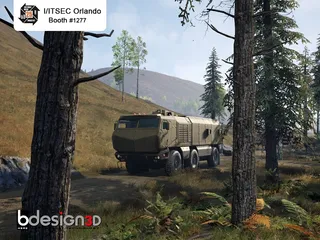SecDef Affirms US Pacific Training Commitment
Contact Our Team
For more information about how Halldale can add value to your marketing and promotional campaigns or to discuss event exhibitor and sponsorship opportunities, contact our team to find out more
The Americas -
holly.foster@halldale.com
Rest of World -
jeremy@halldale.com

Any thought of the US taking its policy eyes off the Pacific Rim during the ongoing Ukraine-Russia War should be set aside following US Secretary of Defense Lloyd J. Austin’s just-concluded visit to Cambodia where he attended the 9th ASEAN Ministers’ Meeting. Austin reaffirmed the US’s commitment to working with ASEAN to address the complex set of challenges confronting the region – from terrorism to nuclear proliferation to maritime security threats.
Of relevance to MS&T, the Pentagon is pledging to further improve interoperability with regional nations’ militaries through increased training and education activities.
In one case during the meeting, Indonesian Defense Minister Prabowo Subianto and Austin revealed the two nations’ militaries will exercise together more. “We're continuing to expand the scope and complexity of our engagements,” the US Defense Secretary said and added, “Earlier this year, Indonesia hosted a super [Exercise] Garuda Shield, with more than 4,000 combined forces from 14 countries… making it one of the largest multinational exercises in the region.” The US and Indonesia will also expand opportunities for service members to study together. Prabowo noted that Indonesian cadets and midshipmen are now at the US military academies.
The US’s recent commitment to further expand bi- and multi-lateral training and education initiatives with Pacific nations’ defense forces is attention-getting. The high-level pronouncements keep the region’s military services on their trajectory of completing increasingly rigorous training across warfare domains.
One recent event, RIMPAC 2022, had participation from 26 nations, 38 surface ships, three submarines, nine national land forces, more than 30 unmanned systems, approximately 170 aircraft and over 25,000 personnel. RIMPAC 2022’s numerous “firsts” included the first embedded use of the MQ-9A and MQ-9B unmanned aerial vehicles, and the unmanned surface vessels Nomad, Ranger, Sea Hawk and Sea Hunter; with data and knowledge sharing amongst 13 countries, which included Australia, Canada, Japan, Korea, Malaysia, Philippines, Peru, Chile, Mexico, Singapore and Indonesia.


